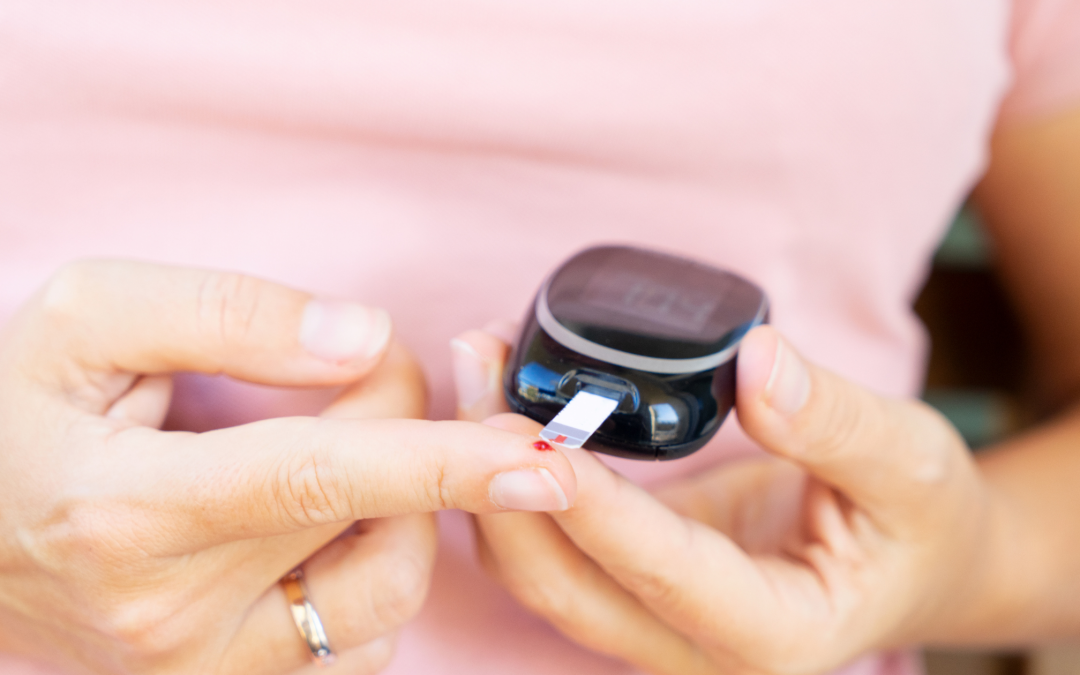Borderline diabetes is basically the same thing as diabetes, just a step behind. We addressed in a previous blog what it means to be insulin sensitive, pre-diabetic or diabetic (https://tlcforwellbeing.com/pre-diabetic-or-insulin-resistant-what-does-that-mean/) but it is worthwhile reviewing the symptoms you have to look out for.
What is it?
Borderline diabetes is the condition leading up to type 2 diabetes. The pancreas is still producing enough of the hormone to respond to ingested carbohydrates, but it’s less effective at removing the sugar from the bloodstream, so blood sugar levels remain high. It doesn’t mean you will definitely develop diabetes, but it’s a warning sign of what may come if your lifestyle does not improve. While it’s scary to be diagnosed with borderline diabetes, it can also be a great wake up call and provide an opportunity to change course and start your TLC-Program.
Here are some signs and symptoms of borderline diabetes:
Dark Spots on Your Skin
Prediabetes can cause dark patches on the skin called acanthosis nigricans (AN). These dark patches could be an early warning sign of prediabetes. It usually appears in elbows, armpits, knees, or on the neck, has a velvety texture, and likely occurs because excess insulin causes a rapid growth of cells.
Exhaustion
Feeling more sluggish and tired? The reason for this fatigue could be because your blood sugar is going up and down. Other factors that can create that sluggish feeling are the depression or obesity which are also culprits of blood sugar problems.
Sleeping is a Battle
People who have borderline diabetes often have a hard time sleeping. This contributes to the condition, making it worse. Sleep deprivation can cause insulin-producing cells to fail to use the insulin efficiently or to stop functioning. Your body also secretes more stress hormones, which interfere with insulin ability to be effective.
Everything is getting blurry
Squinting or rubbing your eyes due to blurry vision? Borderline diabetes is one of many possible reasons. High blood sugar causes damage to the blood vessels in the eye, which can leak and swell, leading to vision changes.
You have to Urinate more frequently
‘Going’ more often? Someone who is developing or has developed borderline diabetes will begin to urinate on a very frequent basis. This is likely linked to the fact that they are also experiencing increased thirst. Normally glucose would be absorbed by the kidneys through the blood to make urine, and then returned back into the bloodstream. When a person’s blood glucose levels are abnormally high not all of the glucose can be reabsorbed, and the excess goes into the urine where it’s presence draws in more water from the blood. This leads to unusually high volumes of urine.
You’re Really Thirsty
Thirst is a key sign of prediabetes or borderline diabetes. This is due to the body’s inability to process blood sugars.
As we previously mentioned, a person with borderline diabetes is urinating more which is another reason why they need more water.
You Have PCOS
Why these two conditions are often linked is still unclear, but the main connection is likely the hormones that regulates glucose in the blood. High levels may contribute to the increased production of male hormones called androgens, which is a symptom of PCOS. PCOS is also associated with being overweight, as is prediabetes, but even normal-weight women with PCOS are at increased risk of high blood sugar.
You have High Cholesterol
In addition to high blood sugar levels, prediabetes can cause high cholesterol. The hormone produced by the pancreas to regulate glucose in the blood also stimulates your liver to increase production of cholesterol.
Wounds and Bruises Heal slowly
Anyone who notices that their cuts and bruises are healing slower should be checked for prediabetes. The immune system and circulation play vital roles in wound healing. If pre-diabetes or type 2 diabetes has negatively impacted immune function or circulation, then injuries such as cuts and bruises may be slow to heal.
Someone in your Family has Diabetes
Anyone who has a known family history of diabetes is at a higher risk of developing diabetes than someone who doesn’t. There can be a genetic cause for the development of type 2 diabetes due to certain gene mutations.
Do you have a few of these signs? Now is the time to act and prevent Diabetes.
Start your TLC- Program now to help regulate and balance hormones and reduce the risk of developing prediabetes and diabetes.

